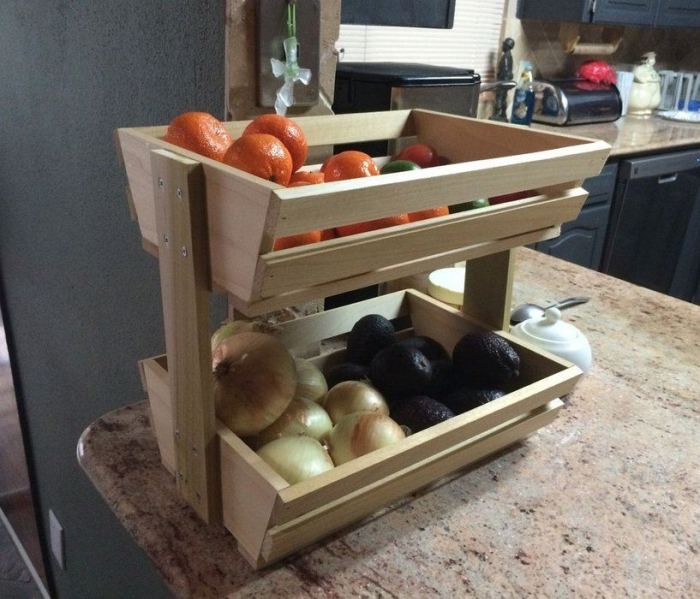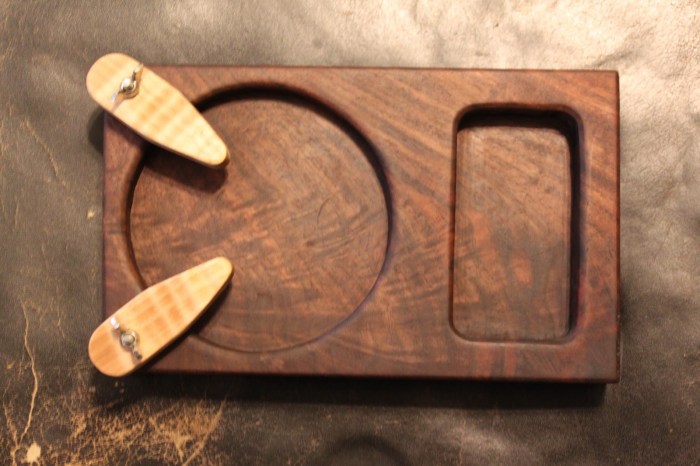Profitable woodworking projects are more than just a hobby; they can be a rewarding and lucrative business venture. Whether you’re a seasoned craftsman or just starting out, the demand for handcrafted wooden items is strong, and with a bit of creativity and business acumen, you can turn your passion into profit.
This guide will walk you through the steps of identifying profitable projects, crafting high-quality pieces, and marketing them effectively. We’ll explore the current market trends, analyze popular project types, and provide practical tips for pricing, selling, and building a successful woodworking business.
The Market for Woodworking Projects

Woodworking has experienced a resurgence in popularity, driven by a growing appreciation for handcrafted items and a desire for unique, personalized pieces. The market for woodworking projects is thriving, with diverse trends shaping its landscape.
Popular Project Types and Materials
The woodworking market is diverse, catering to various interests and skill levels. Some popular project types include furniture, home décor, outdoor structures, and custom-made items.
- Furniture: Demand for handcrafted furniture, including tables, chairs, beds, and cabinets, remains strong. Consumers value the durability, craftsmanship, and unique character of handmade furniture.
- Home Décor: Woodworking projects like wall art, shelves, and decorative accents are popular choices for adding personality and warmth to homes.
- Outdoor Structures: Demand for outdoor structures, such as pergolas, gazebos, and playsets, is increasing as homeowners seek to enhance their outdoor living spaces.
- Custom-Made Items: Woodworkers are increasingly fulfilling custom orders for items like cutting boards, jewelry boxes, and personalized gifts, catering to individual preferences and needs.
Popular materials used in woodworking projects include:
- Hardwoods: Oak, maple, cherry, and walnut are highly sought-after for their durability, beauty, and workability.
- Softwoods: Pine, cedar, and redwood are often used for outdoor projects and furniture due to their affordability and resistance to decay.
- Reclaimed Wood: Using reclaimed wood, such as salvaged barnwood or old pallets, is gaining popularity for its sustainability and unique character.
- Exotic Woods: Woods like mahogany, teak, and rosewood are prized for their exotic appearances and durability, often used in high-end furniture and custom projects.
Demographics of Buyers and Preferences, Profitable woodworking projects
The woodworking market attracts a diverse range of buyers with varying preferences and motivations.
- Millennials: This demographic, known for its appreciation for handcrafted items and sustainability, is a growing segment of the woodworking market. They often seek unique, personalized pieces that reflect their individual style.
- Homeowners: Homeowners are a significant segment of the woodworking market, seeking to personalize their homes with handcrafted furniture, décor, and functional items.
- DIY Enthusiasts: The rise of DIY culture has fueled demand for woodworking projects, as individuals seek to create their own furniture, home décor, and other items.
- Gift-Givers: Woodworking projects are popular gifts for birthdays, holidays, and special occasions, as they offer a personal touch and unique value.
Factors Influencing Profitability
Profitability in woodworking depends on various factors, including material costs, labor, and market demand.
- Material Costs: The cost of wood, hardware, and other materials can significantly impact profitability. Sourcing materials efficiently and minimizing waste are crucial for maximizing profit margins.
- Labor: The time and skill required to complete a project directly influence labor costs. Efficiency, effective use of tools, and proper project planning can help minimize labor costs.
- Market Demand: Understanding market demand for specific project types and materials is essential for pricing projects competitively and ensuring a steady flow of orders.
“Profitability in woodworking is a delicate balance between material costs, labor, and market demand. Understanding these factors and making informed decisions can help woodworkers maximize their earnings.”
Identifying Profitable Woodworking Projects

To make a profit in woodworking, it’s crucial to choose projects that are in demand, have low competition, and are relatively easy to produce. You need to find the sweet spot between creating something unique and desirable while keeping production costs manageable.
Analyzing Market Demand and Competition
Understanding the market demand and competition is crucial for identifying profitable woodworking projects. This involves researching popular trends, identifying potential niches, and assessing the competition in each area.
- Identify High-Demand Projects: Look for woodworking projects that are consistently in demand, such as furniture, home decor, and custom-made items. Analyze online marketplaces like Etsy and Pinterest to identify popular trends and popular search terms.
- Explore Unique Designs and Functionalities: To stand out from the competition, consider offering unique designs, personalized customization options, or incorporating innovative functionalities into your projects. This could involve incorporating sustainable materials, using advanced techniques, or focusing on specific themes or styles.
- Assess Competition: Research existing woodworking businesses and online sellers to understand their offerings, pricing strategies, and target audiences. Analyze their strengths and weaknesses to identify opportunities for differentiation and competitive advantage.
Analyzing Cost of Materials and Labor
Understanding the cost of materials and labor is essential for determining the profitability of your woodworking projects. You need to factor in the cost of wood, hardware, finishes, and your time.
- Material Costs: Research the cost of different wood types, hardware, and finishes. Consider factors like wood quality, availability, and seasonal price fluctuations. Look for cost-effective alternatives or negotiate bulk discounts when possible.
- Labor Costs: Calculate your hourly rate based on your skills, experience, and market value. Factor in time spent on design, cutting, assembly, finishing, and marketing. You can use time-tracking tools to monitor your productivity and identify areas for improvement.
- Project Cost Estimation: Create a detailed cost breakdown for each project, including materials, labor, and any additional expenses like shipping and packaging. This will help you determine the minimum selling price to cover your costs and generate a profit.
Pricing Strategies for Woodworking Projects
Pricing your woodworking projects strategically is crucial for maximizing profitability. Consider factors like material cost, time investment, market value, and your desired profit margin.
- Cost-Plus Pricing: This method involves adding a markup to your total project cost, including materials, labor, and overhead. This ensures you cover your expenses and make a profit. For example, if your total project cost is $100, you could add a 20% markup to arrive at a selling price of $120.
- Value-Based Pricing: This method focuses on the perceived value of your product to the customer. Consider factors like the uniqueness of your design, the quality of materials, and the level of craftsmanship. You can charge a premium for unique or highly sought-after items.
- Competitive Pricing: Analyze the pricing of similar woodworking projects in the market to determine a competitive price point. You can adjust your pricing based on the quality of your work, your target audience, and your desired profit margin.
Crafting High-Quality Woodworking Projects: Profitable Woodworking Projects

Creating high-quality woodworking projects that are both visually appealing and durable is crucial for success in this field. This involves using the right materials, applying proper techniques, and maintaining a high level of craftsmanship. By focusing on these aspects, you can build projects that are not only aesthetically pleasing but also stand the test of time, attracting customers and enhancing your reputation as a skilled woodworker.
Achieving Superior Finishes
A well-executed finish enhances the appearance and durability of your woodworking projects. Here are some essential steps to achieve superior finishes:
- Sanding: Proper sanding is fundamental for a smooth and even surface. Start with coarse grit sandpaper and gradually progress to finer grits. This removes imperfections, creates a uniform texture, and prepares the surface for the finish.
- Choosing the Right Finish: The type of finish you choose depends on the project and desired outcome. Options include oil-based finishes, water-based finishes, lacquers, and varnishes. Consider factors like durability, sheen, and ease of application.
- Application Techniques: Applying the finish evenly and consistently is crucial. Use a brush, roller, or spray gun, depending on the project and the finish. Ensure a dust-free environment and follow the manufacturer’s instructions for drying time.
- Multiple Coats: Multiple coats of finish provide added protection and depth. Allow each coat to dry thoroughly before applying the next.
Optimizing Material Usage
Efficient material usage is essential for profitability. By minimizing waste and maximizing the use of each piece of wood, you can save money and reduce your environmental impact.
- Careful Planning: Before starting a project, create detailed plans and layouts to determine the exact amount of wood needed. This helps avoid unnecessary purchases and minimize waste.
- Using Leftovers: Don’t discard small pieces of wood. Keep them for future projects or use them for creative embellishments, like inlays or decorative elements.
- Joint Efficiency: Consider using efficient joinery techniques like mortise and tenon, dovetail, or finger joints, which minimize material waste compared to simple butt joints.
- Reclaimed Wood: Consider using reclaimed wood, which is both environmentally friendly and often adds unique character to your projects.
Prioritizing Safety
Safety should always be paramount in woodworking. Using the right tools and following safe practices protects you from injury and ensures a positive woodworking experience.
- Proper Tool Use: Familiarize yourself with the operation and safety guidelines of every tool you use. This includes understanding the correct techniques for handling power tools, using guards, and maintaining sharp blades.
- Personal Protective Equipment (PPE): Always wear appropriate PPE, including safety glasses, ear protection, a dust mask, and gloves, when working with wood.
- Work Area Organization: Maintain a clean and organized work area. This prevents accidents and ensures efficient workflow.
- Tool Maintenance: Regularly inspect and maintain your tools. Sharp blades and properly functioning equipment reduce the risk of accidents and improve project quality.
Marketing and Selling Woodworking Projects

Getting your woodworking projects in front of potential buyers is essential for turning your craft into a profitable venture. Whether you’re selling online or at local markets, effective marketing strategies are crucial for attracting customers and building a successful business.
Online Marketing Strategies
Online platforms offer a vast audience and diverse marketing opportunities for woodworking projects.
- Establish a Professional Website: A website serves as your online storefront, showcasing your woodworking skills and project offerings. It should include high-quality images, detailed descriptions, pricing, and contact information.
- Utilize Social Media: Platforms like Instagram, Facebook, and Pinterest allow you to connect with potential customers, share your woodworking journey, and showcase your projects.
- Engage in Online Marketplaces: Etsy, Amazon Handmade, and other online marketplaces provide a ready-made audience for handcrafted goods.
- Run Targeted Advertising Campaigns: Online advertising platforms like Google Ads and Facebook Ads allow you to target specific demographics and interests, increasing the visibility of your projects.
- Content Marketing: Create blog posts, videos, or tutorials related to woodworking, offering valuable information and showcasing your expertise.
Local Market Strategies
Local markets provide an opportunity to connect with customers in person and build relationships.
- Participate in Craft Fairs and Festivals: These events attract a large audience interested in handmade goods, offering excellent exposure for your woodworking projects.
- Partner with Local Businesses: Collaborate with shops, galleries, or home decor stores to showcase and sell your woodworking projects.
- Network with Other Artists: Connect with fellow woodworkers and artisans to exchange ideas, share resources, and potentially collaborate on projects.
- Attend Community Events: Participate in local events like farmers markets, neighborhood gatherings, or workshops to connect with potential customers.
Building a Professional Portfolio
A well-crafted portfolio showcases your woodworking skills and unique project offerings, helping you attract clients and stand out from the competition.
- High-Quality Photography: Invest in professional-quality photographs that capture the details and beauty of your woodworking projects.
- Clear Project Descriptions: Provide detailed descriptions of your projects, including materials, dimensions, finishes, and any unique features.
- Showcase Diverse Skills: Highlight your range of woodworking skills, including different styles, techniques, and project types.
- Include Client Testimonials: Positive feedback from satisfied customers adds credibility and builds trust.
Building a Loyal Customer Base
Generating repeat business is crucial for long-term success.
- Provide Excellent Customer Service: Respond promptly to inquiries, address concerns, and strive to exceed customer expectations.
- Offer Personalized Experiences: Engage with customers on a personal level, understanding their needs and preferences.
- Build Relationships: Connect with customers on social media, offer exclusive promotions, and nurture long-term relationships.
- Offer Loyalty Programs: Reward repeat customers with discounts, special offers, or exclusive access to new products.
Examples of Profitable Woodworking Projects
Woodworking offers a diverse range of projects that can be lucrative. Identifying profitable woodworking projects requires understanding the market demand, your skills, and the potential for high profit margins. This section will showcase several examples of profitable woodworking projects, highlighting their unique features, materials, and estimated costs.
Profitable Woodworking Projects with High Profit Margins
Here are a few examples of woodworking projects that are known for their high profit margins:
| Project Name | Description | Estimated Cost | Estimated Sale Price |
|---|---|---|---|
| Custom-Made Wooden Jewelry Boxes | Handcrafted jewelry boxes made from premium woods like walnut, cherry, or maple. Each box is unique and can be personalized with engravings or inlays. | $50-$100 | $150-$300 |
| Wooden Wall Clocks | Rustic or modern wall clocks crafted from reclaimed wood or exotic hardwoods. These clocks can be designed with unique patterns, shapes, and finishes. | $75-$150 | $200-$400 |
| Handmade Wooden Cutting Boards | Durable cutting boards made from hardwoods like maple or cherry. They can be crafted with various sizes, shapes, and features like juice grooves or handles. | $30-$60 | $80-$150 |
| Personalized Wooden Signs | Custom-designed wooden signs for home décor, businesses, or special events. These signs can be crafted from various woods and painted with unique designs or lettering. | $25-$50 | $75-$125 |
These projects are highly profitable because they are often customized, require skilled craftsmanship, and cater to a specific niche market. By focusing on high-quality materials and unique designs, you can command higher prices and generate substantial profits. The estimated costs and sale prices are based on average market rates and may vary depending on the specific project, materials, and location. It is important to conduct thorough market research and pricing analysis to determine the most profitable options for your woodworking business.
Building profitable woodworking projects takes practice and skill, but it’s a rewarding journey. Start with a simple project like a cutting board or a birdhouse to get a feel for the tools and techniques. You can find inspiration for your first woodworking project here , and as you gain confidence, you can move on to more complex pieces.
Once you’ve mastered the basics, you can start selling your work and turning your woodworking passion into a profitable business.
Ending Remarks
With the right approach, profitable woodworking projects can provide a fulfilling and financially rewarding experience. By understanding the market, mastering your craft, and implementing effective marketing strategies, you can establish a thriving woodworking business and share your passion with the world.
FAQ Section
How do I find woodworking projects with high demand?
Research online marketplaces like Etsy and Pinterest to see what’s selling well. Attend local craft fairs and observe what items are attracting the most attention. Consider the seasonality of certain projects, like holiday decorations or outdoor furniture.
What are some essential tools for profitable woodworking?
Invest in quality tools that are appropriate for the types of projects you plan to create. Essential tools include a table saw, a drill press, a sander, and a router. You’ll also need basic hand tools like chisels, hammers, and screwdrivers.
How do I price my woodworking projects?
Calculate your material costs, labor time, and overhead expenses. Factor in your desired profit margin. Research similar products to get a sense of market pricing. You can also offer tiered pricing based on complexity and customization.
Where can I sell my woodworking projects?
Explore online platforms like Etsy, Shopify, and Facebook Marketplace. Consider selling at local craft fairs, farmers markets, or through consignment shops. Build a website to showcase your work and attract customers.
What are some tips for marketing my woodworking business?
Create a professional portfolio showcasing your best work. Use social media to share your projects and engage with potential customers. Offer discounts or promotions to attract new clients. Network with other woodworkers and artisans to build connections.
